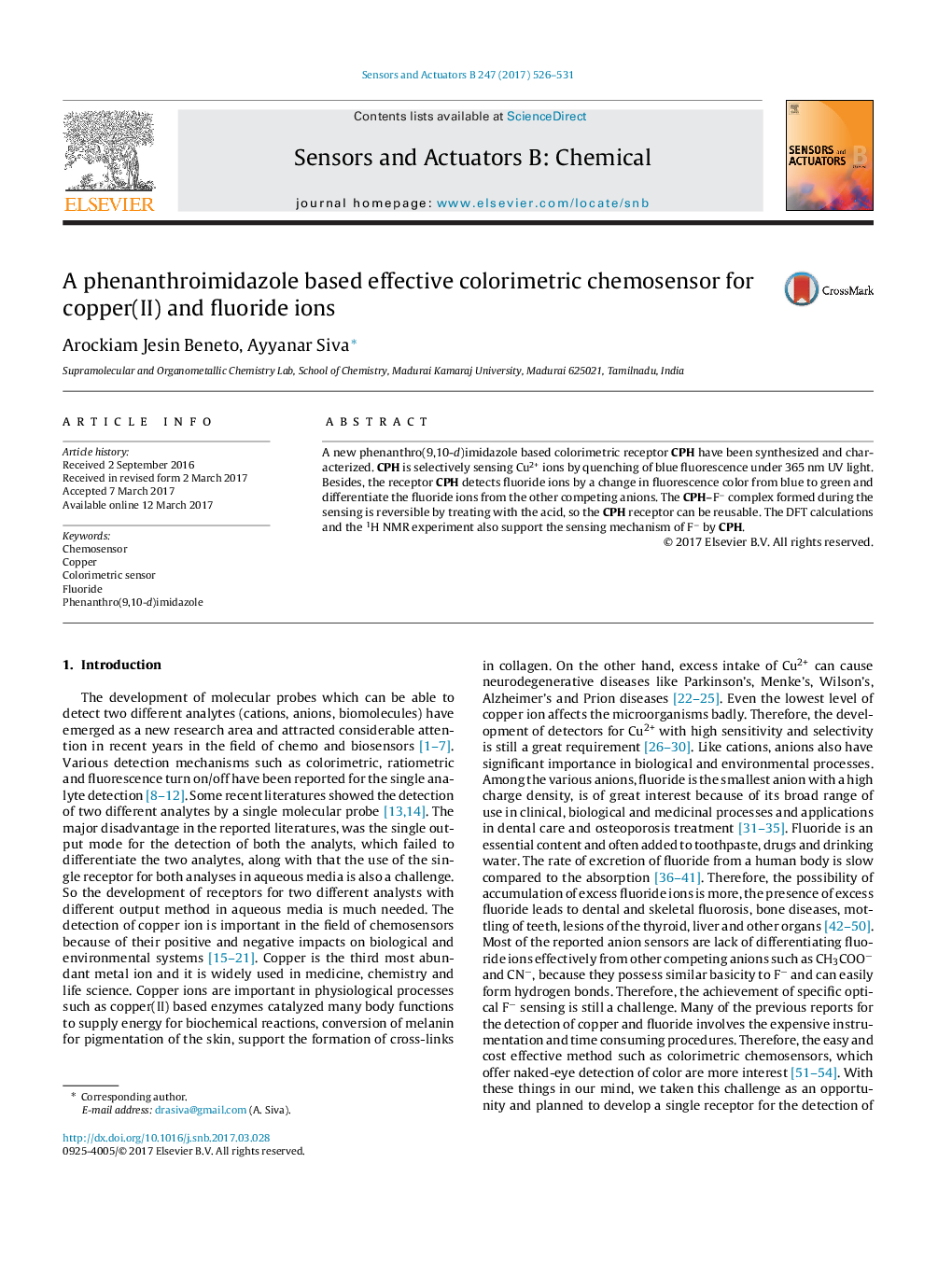| Article ID | Journal | Published Year | Pages | File Type |
|---|---|---|---|---|
| 5009403 | Sensors and Actuators B: Chemical | 2017 | 6 Pages |
â¢A new phenanthro(9,10-d)imidazole based colorimetric receptor CPH has been synthesized.â¢CPH selectively sensing Cu2+ ions by quenching of fluorescence under 365 nm UV light. Its also detect fluoride ions by change in color from blue to green.â¢The CPH-Fâ complex formed during the sensing is reversed by treating with the acid.â¢The DFT calculations also support the sensing mechanism of Fâ by CPH.
A new phenanthro(9,10-d)imidazole based colorimetric receptor CPH have been synthesized and characterized. CPH is selectively sensing Cu2+ ions by quenching of blue fluorescence under 365Â nm UV light. Besides, the receptor CPH detects fluoride ions by a change in fluorescence color from blue to green and differentiate the fluoride ions from the other competing anions. The CPH-Fâ complex formed during the sensing is reversible by treating with the acid, so the CPH receptor can be reusable. The DFT calculations and the 1H NMR experiment also support the sensing mechanism of Fâ by CPH.
Graphical abstractA new phenanthro(9,10-d)imidazole based colorimetric receptor CPH have been synthesized and characterized. CPH is selectively sensing Cu2+ ions by quenching of fluorescence under 365Â nm UV light. Besides, the receptor CPH detects fluoride ions by a change in color from blue to green and differentiate the fluoride ions from the other competing anions. The CPH-Fâ complex formed during the sensing is reversed by treating with the acid, so the CPH receptor can be reusable. The DFT calculations also support the sensing mechanism of Fâ by CPH.Download high-res image (73KB)Download full-size image
